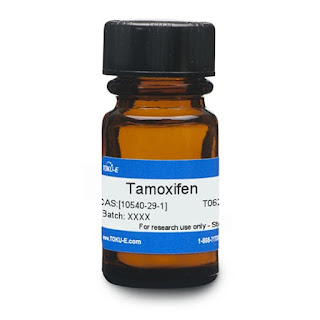Tamoxifen Reduces Risk of Recurring Breast Cancer in Postmenopausal Women and In Premenopausal Women
Tamoxifen is an antiestrogen, sold under various brand names such as Soltamox. The lliquid brand name is Soltamox and pill brand names include, Nolvadex, Apo-Tamox, Tamofen, and Tamone. It is an FDA approved medication for the prevention and treatment of breast cancer. The drug is a hormone therapy given as adjuvant therapy (treatment after successful surgery) in women or men with lymph node negative or lymph node positive breast cancer. It is used to treat men and both premenopausal and postmenopausal women. The drug halts cancer cells from utilizing estrogen and progesterone for spreading in the body.
Tamoxifen is a selective estrogen receptor modulator attaches to the estrogen receptors in breast cells to block the effects of estrogen in the breast tissue. It enters the cells to halt the cancer from accessing the hormones they need to grow and spread. The medication binds to estrogen receptor and forms complexes with co-repressors instead of co-activators, thus halting the estrogen receptor transcriptional program. It is used reduce the risk of early-stage, hormone-receptor-positive breast cancer coming back after surgery and other treatments. Tamoxifen reduces the risk of breast cancer coming back by 40% to 50% in postmenopausal women and by 30% to 50% in premenopausal women. In addition to lowering the risk of breast cancer and cancer recurrence, it prevents bone loss (osteoporosis) after menopause and lowers cholesterol levels.
Side effects of tamoxifen include, nausea, menstrual irregularities, vaginal bleeding, weight loss, and mood changes (anxiety and/or depression). Women who are already experiencing menopause may also want to be aware of the possible side effects of tamoxifen therapy. Menopause can lead to hot flashes and other uncomfortable side effects. This is especially true if hormone replacement therapy is being used, as hormone replacement therapy can be linked to hot flashes. However, women should be aware that while some side effects of tamoxifen, like hot flashes and night sweats, are treatable, others, such as vaginal dryness and thinning of the vagina, can be permanent.
One of the possible, although less common side effects of tamoxifen is a rise in blood clots. Blood clots are caused by the accumulation of small vessel wall fragments that break free from the smooth muscle cells in the legs of the body. The rupture of these blood clots can lead to major bleeding or, rarely, to life-threatening heart attacks or strokes. While serious side effects of estrogen therapy are relatively uncommon, they do occur and should be considered when tamoxifen is being considered by a patient.
The effectiveness of tamoxifen may be compromised in patients with metabolic resistance, who have insufficient metabolic generation of the active metabolites endoxifen and 4-hydroxy-tamoxifen. It is also not recommended for pregnant women or for those planning to become pregnant as it may cause birth defects. Moreover, up to 50% of patients who receive the medication suffer recurrence. BQ323636.1 was identified recently as a novel splice variant of NCOR2 that can robustly predict tamoxifen resistance in estrogen receptor α positive primary breast cancer.




Comments
Post a Comment